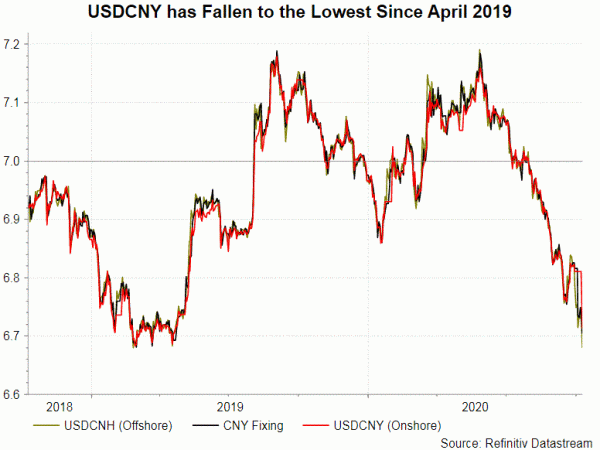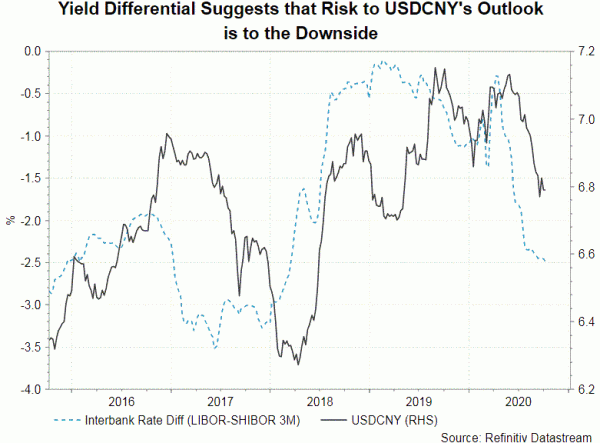PBOC announced over the weekend to lower the FX risk reserve ratio for forward foreign exchange sales from 20% to 0, effective October 12. The move is likely a response to the strength in renminbi (a.k.a. RMB, CNY). The central bank pledged to “maintain the flexibility of the RMB exchange rate and stabilize market expectations, so as to keep the RMB exchange rate basically stable at an adaptive and equilibrium level” in the accompanying statement. The bias of CNY against USD remains skewed to the upside, in light of the yield differential and relatively stronger recovery in China (as suggested but China’s macroeconomic indicators).

The reserve requirement on FX derivative sales was introduced in September 2015, as a tool to curb capital flowing out of China after renminbi reform. Commercial banks are required to deposit reserves with the PBOC as they sell FX derivatives to customers. Commercial banks would transfer the higher costs to the customers who buy foreign currencies (and simultaneously sell renminbi) through derivatives. PBOC’s move over the weekend is thus interpreted as a response to recent strength in renminbi. By lowering the reserve ratio, the cost of customers who buy foreign currencies (and simultaneously sell renminbi) through derivatives would be lowered, encouraging activities of selling renminbi.
USDCNY has weakened for four consecutive months since June. For 3Q20 alone, the pair has dropped -3.98%, making CNY one of the strongest Asian currencies against USD in the quarter. USDCNY has dropped -1.6% month-to-date, suggesting that the strength of CNY has remained after China’s national day holiday in the first week of October. Monetary policy divergence and a relatively stronger economic recovery in China are the key reasons for renminbi’s appreciation since June.

PBOC has kept the one-year medium lending facility (MLF) rate and loan prime rate (LPR), the policy rate, unchanged at 2.95% and 3.85% respectively since April. Over the past months, the central bank has reiterated the stance of targeted monetary policy. Recent economic data signals that China’s recovery has gathered momentum, suggesting that PBOC will maintain the current policy rate for some time. By contrast, the Fed officially adopted average inflation targeting in September. This is a dovish shift in the monetary policy as the central bank will likely accelerate easing to bring inflation back to +2%. It will also maintain an ultra expansionary policy for some time even after inflation has exceeded +2%. Policy divergence suggests yield differential to widen further, supporting USDCNY weakness.
For the week ahead, China will release several economic data for September, including money supply, loan growth, trade surplus and inflation. Trader surplus probably widened to US$ 59.3B from US$ 58.9B in August. Headline CPI probably eased to +1.9% y/y in September, from +2.4% a month ago.















